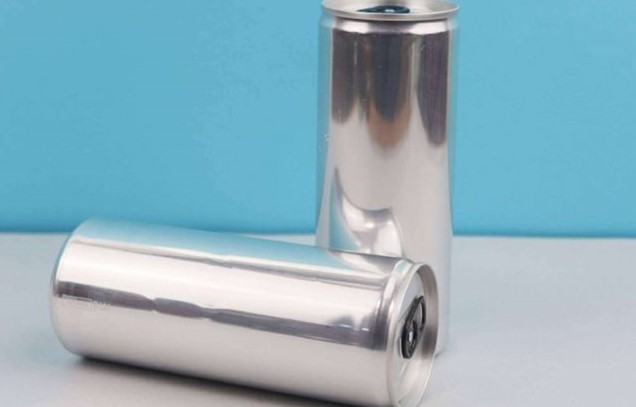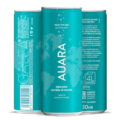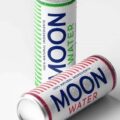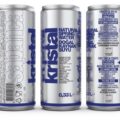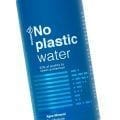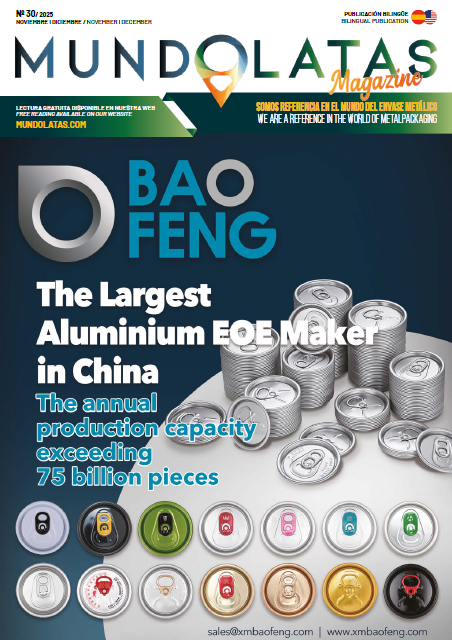Water in Cans: Sustainability and Technology in the Beverage Packaging Industry
Introduction
Canned water has emerged as a sustainable and eco-friendly alternative to plastic bottles in the beverage industry. As environmental awareness grows, consumers are looking for options that reduce ecological impact without compromising quality and affordability. Packaging water in aluminum cans presents significant advantages in terms of recyclability and product preservation, but also poses unique technical challenges that must be addressed.
Advantages of Canned Packaging
Recyclability: Aluminum is one of the most recyclable and sustainable materials available for beverage packaging. Aluminum cans can be recycled indefinitely without loss of quality, and the recycling process consumes significantly less energy compared to the production of new aluminum.
Product Protection: The cans provide a superior barrier against light and oxygen, two factors that can affect water quality. Because they are completely sealed, aluminum cans protect the contents from contamination and preserve the taste and purity of the water.
Transportation Efficiency: The cans are lightweight and stackable, which improves logistical efficiency and reduces transportation costs and associated carbon emissions. Its shape and strength also minimize the risk of damage during transportation and storage.
Technical Challenges
Water Quality: Packaging water in cans requires strict control of water quality to avoid corrosion and interaction with aluminum. The water must be properly treated and purified to ensure that it does not contain substances that may react with the can material.
Internal Coatings: To prevent corrosion and possible flavor transfer, aluminum cans are internally coated with a layer of varnish or resin. This coating must be safe for food contact and resistant to degradation.
Filling Process: The filling of water cans should be carried out under aseptic conditions to guarantee the safety and quality of the product. Filling machines must be accurate and efficient, maintaining can integrity and avoiding contamination.
Marketing and Consumer Perception
Although canned water is a more sustainable option, changing the perception of consumers accustomed to plastic bottles is a challenge. Consumer education on environmental benefits and the promotion of a sustainable lifestyle are crucial to the adoption of this alternative.
Innovations and Future Trends
The development of safer and more environmentally friendly internal coatings is an area of continuous innovation. In addition, new filling and sealing technologies are being explored to improve the efficiency and sustainability of the packaging process.
Conclusion
Canned water is a promising solution to the environmental challenges facing the beverage industry. It offers significant advantages in terms of recyclability, product protection and logistical efficiency. However, technical challenges related to water quality, internal coatings and the filling process must be carefully addressed to ensure the success of this packaging approach. With continued innovation and commitment to sustainability, canned water has the potential to become a standard in the beverage industry.
Trends in the Canned Water Market: Innovation and Consumer Preferences
As sustainability becomes a priority for consumers and businesses, the canned water market is experiencing a number of emerging trends that are shaping its future. These trends reflect the growing demand for environmentally friendly packaging solutions and innovation in the beverage industry.
- Focus on Sustainability: The main trend in the canned water market is the focus on sustainability. Aluminum cans offer a significantly higher recycling rate than plastic, making them a preferred choice for environmentally conscious consumers. In addition, companies are highlighting the recyclability and reduced carbon footprint of their packaging in their marketing campaigns.
- Innovative Packaging Designs: Companies are investing in attractive and functional can designs that appeal to consumers and stand out on the shelf. This includes unique shapes, easy-to-use opening mechanisms and eye-catching graphics. Packaging design plays a crucial role in brand perception and consumer experience.
- Value-added water: Beyond pure water, there is a growing trend toward value-added canned water, including mineral water, sparkling water, and water infused with flavors or enriched with vitamins and minerals. These products offer consumers health benefits and variety, meeting the demand for healthier beverage options.
- Transparency and Ethical Sourcing: Today’s consumers are looking for transparency in sourcing and production practices. Brands that promote the ethical sourcing of their water and demonstrate commitment to responsible sourcing practices are gaining popularity. This also includes efforts to protect and preserve water sources.
- Collaborations and Limited Editions: Collaborations between water brands and designers, artists or celebrities are on the rise, resulting in limited editions and special collections. These collaborations help brands generate excitement and appeal to different consumer segments.
- Alternatives to Aluminum Cans: Although aluminum is highly recyclable, some brands are exploring even more sustainable alternatives, such as cans made from post-consumer recycled materials or even biodegradable materials. These innovations aim to further reduce the environmental impact of beverage packaging.
- Advanced Packaging Technology: Packaging technology is advancing to improve efficiency, hygiene and sustainability. New aseptic filling technologies and improved sealing systems are enabling longer product shelf life and reducing the risk of contamination.
- Global Market Expansion: Canned water is gaining ground in global markets outside traditionally strong regions such as North America and Europe. Increasing urbanization and the middle class in developing countries are driving demand for convenient and sustainable canned water.
In summary, the canned water market is rapidly evolving to meet consumer demands for sustainable, healthy and convenient beverage options. As trends toward sustainability and innovation continue, we are likely to see even more exciting developments in this space.
Canning water in aluminum cans
Canning water in aluminum cans is beneficial for several reasons that align with both consumer preferences and sustainability trends in the packaging industry:
- Recyclability: Aluminum is one of the most recyclable materials available. Aluminum cans can be recycled indefinitely without loss of quality, reducing the need to extract and process new raw materials. This is beneficial to the environment and supports a circular economy.
- Transportation Efficiency: Aluminum cans are lightweight and stackable, which improves transportation efficiency and reduces associated costs and carbon emissions. In addition, its strength helps minimize damage during transportation and storage.
- Product Protection: Aluminum cans provide an excellent barrier against light, oxygen and other external contaminants, helping to maintain the freshness and purity of water. This is essential to ensure product quality and safety.
- Energy Sustainability: Although the initial production of aluminum can be energy intensive, aluminum recycling consumes only about 5% of the energy needed to produce primary aluminum. Therefore, the use of recycled aluminum cans to package water can significantly reduce energy consumption.
- Design Innovation: Aluminum cans offer design flexibility, allowing brands to differentiate themselves with attractive and functional packaging. In addition, the cans can be cooled quickly, which enhances the water consumption experience.
- Consumer Trend: There is a growing trend among consumers towards products that are perceived as more sustainable and environmentally friendly. Aluminum cans, due to their high recycling rate and durability, align with these preferences.
- Safety and Convenience: The cans are strong and safe, do not break like glass and are stronger than plastic, making them suitable for a variety of situations, including outdoor activities and events where glass containers may be prohibited.
- Technological Innovations: Advances in packaging technologies have made it possible to can water efficiently and safely, ensuring that water maintains its quality from packaging to consumption.
In summary, canning water in aluminum cans is beneficial due to material sustainability, superior product protection, supply chain efficiency and alignment with consumer preferences for greener packaging options.
Packaging of water in aluminum cans
Packaging water in aluminum cans presents both advantages and disadvantages that should be considered by consumers and companies. Below are some of the pros and cons of canned water:
Pros:
- Recyclability: Aluminum cans are 100% recyclable and can be recycled indefinitely without loss of quality, contributing to a lower carbon footprint and a circular economy.
- Product Protection: Aluminum cans provide an excellent barrier against air, light and microorganisms, helping to preserve water quality and freshness for a longer period of time.
- Cooling Speed: Aluminum cans have the ability to cool faster than other packaging formats, providing a refreshing beverage in less time.
- Safety and Durability: The cans are tamper-proof and shatter-resistant, making them safe to transport and store, and suitable for use at events and locations where glass may be prohibited.
- Transportation Efficiency: Their light weight and stackable shape make the cans efficient to transport, reducing logistics costs and greenhouse gas emissions.
Cons:
- Cost of Production: Initial aluminum production can be costly and energy intensive, although aluminum recycling greatly mitigates this impact.
- Flavor Perception: Some consumers may perceive a difference in the taste of canned water compared to water in glass or plastic bottles, although this may be more psychological than an actual effect of the packaging.
- Recycling Availability: Although aluminum is highly recyclable, recycling infrastructure may not be equally available in all areas, which could limit the effectiveness of aluminum recyclability.
- Competition with Sustainable Alternatives: Although aluminum is a more sustainable option than plastic, there are other biodegradable and sustainable packaging materials that are gaining popularity and could limit the growth of the metal can market.
- Environmental Impact of Unrecycled Aluminum: When aluminum cans are not properly recycled, their disposal can have a negative environmental impact, contributing to the accumulation of waste in landfills.
In summary, aluminum canned water offers significant advantages in terms of recyclability and product protection, but also faces challenges in terms of production costs and competition with other sustainable packaging materials. The choice between canned water and other packaging options will depend on consumer and brand priorities, as well as the availability of recycling infrastructure.

